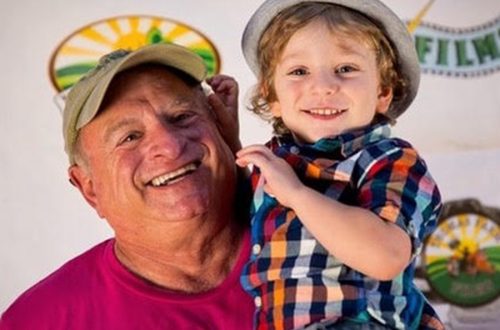Career Technical Education: It’s Not Your Father’s Vocational School
By Suki Wessling
Soquel High School’s woodshop is a large, airy, and loud space. Soquel’s Industrial Arts and Woodshop teacher, Hal Rovick, has to raise his voice al- most to a shout as he points out the equipment, the students, and their projects. These students in his advanced class are focused and independent. One young woman shows off the shelving unit she is making with half-circles of hand-polished tree trunk. A small group confers about a project in another corner.
Rovick raves about the jobs some of his former students hold. “They went straight from my classes to industry,” he says, ticking off the well-paying, steady jobs that former students hold. “I have two students at a cabinet shop, one student in the electrician’s union.”

It’s all in a day’s work in the county’s Career Technical Education (CTE) classrooms.
If you had taken this class 10 years ago, it would have been called ROP. If you had taken it a generation ago, it might have been part of a dedicated vocational program. But CTE isn’t just a new name; it’s a shift in how these courses are being funded and managed, how they are integrated into a college prep curriculum, and who is teaching them.
How did we get here?
In the distant past, students were usually tracked into the program that fit their father’s profession. The kids of factory workers went one direction; the kids of professors went another. Through the years, this tracking proved to be restrictive and schools moved to integrating career programs into schools.
The current model is so new the pixels aren’t dry on the web pages explaining them. Everything students know about CTE this year is in flux, given the shift in funding that will move administration and hiring from the county level mostly to the individual districts.
Change is in the air
Julia Hodges, Director of Secondary Curriculum at Santa Cruz City Schools (SCCS), has announced that SCCS will offer 30 different CTE courses in 14 pathways (areas of focus). Funded by Measure O tax revenue from the community, SCCS is pushing their newest pathway, Computer Science, into all three district high schools, Santa Cruz, Harbor, and Soquel.
Rob Hoffman, CTE Coordinator for Pajaro Valley Unified School District (PVUSD), which encompasses Aptos and South County, presents a grid that shows his high schools supporting pathways derived from all the major industries that hire in this area, including health, hospitality, transportation, media, communication, agriculture, engineering, construction, and business.
If this seems like more of the same, think again. CTE is an integrated plan, serving students in regular high schools who may take a course out of casual interest or pursue a full pathway with intent to work in the industry after graduation, often with certifications. Students are also fully prepared to attend community college or four- year universities. Unlike past vocational programs, students are not locked in.
“CTE programs are shifting to more college and career,” explains Hoffman. “You’re not only in a career path or only college bound. We will be building signature pathways at each of our high schools, Pajaro Valley, Watsonville, Aptos, and Renaissance. It’s going to be what those high schools are known for.”
CTE courses focus on individual skills; CTE pathways integrate skills needed in a sector with hands-on, real- life applications. High schools are looking to industry not only to recruit teachers, but also to support their students—while at high school and beyond.
In order to do that, they need to prepare the students not only to perform the tasks that would be part of their job in the industry, but also to be ready with job skills such as interviewing, resume writing, and making portfolios. Although some teachers express hesitation at requiring students heading for the trades to do UC preparatory class, they all agree that becoming proficient in all the subject areas will serve the students’ needs best in the long run.
Addicted to making a difference
Key to CTE’s success are the teachers, who largely have worked in the industry they teach. Jenny Angelacos is in her sixteenth year of teaching Digital Media in CTE programs, but she didn’t know that’s where she would end up.
“I felt like I was at a fork in my path: Do I want to get into teaching or do I want to go into doing what I’ve been studying?”
Angelacos worked in graphic design and video production when she “fell into” a CTE position teaching photography at Watsonville High.
“It felt so fulfilling to teach kids these skills and open their eyes to the world around them using cameras,” she remembers. “I got addicted to wanting to make a difference in a young person’s life.”
That dedication was crystallized by watching her students not only succeed in school, but in life. She relates the story of a gifted graphic design student at Harbor who confided that his dream was to work at Apple. With Angelacos’s support, he submitted his portfolio to a countywide contest that previously had only given awards in each sector—medical technology, automotive, etc. That year they invented an “overall portfolio winner” award for her student, who went on to study at Cal Poly.
Where is that student now? Working at Apple.
Hal Rovick at Soquel connects his students with the unions in their sec- tor so they can get the highest paying, most secure jobs. He points out that they don’t stay in entry-level jobs for long.
“One student is at a cabinet shop in Morgan Hill,” he says. “He worked on the floor there for a while and now he’s doing CAD programs for that company. He’s 21!”
Other stories are even more impressive. Rovick taught one memorable teen who had started a business building wood stereo cabinets for vehicles. When he came to Rovick’s class, the teacher was hard on him, showing him how poorly built the cabinets were, unable to stand up to the vibrations they’d be subjected to. The student improved his product and his business thrived. A few years after high school, Rovick ran into him and heard that his business had been bought by a business in San Jose—he was now working on Lamborghinis. A few years after that, they connected on Facebook.
The student was now at Tesla, making some of the finest car stereos in the world.
Rovick relates their conversation with a laugh: “He said to me, ‘Dude, it’s like, I work with MS’s and PhD’s and they go ‘blah blah blah’ and then they look at me and say, ‘What do you think?’”
“When you talk about the trades, people think you’re going to spend four years in an apprenticeship and then you’re stuck for the rest of your life,” Rovick says. “Not true, you can just keep going up.”
CTE is about community
Everyone involved in CTE stresses that the program won’t work if it isn’t integrated into the community. At SCCS, it starts with the funding approved through Measure O in 2015.
“It does help for the community to know what we’re doing because that’s their funding,” Angelacos explains. “The benefit is when people really understand the value of what they’re bringing to their community.”
Next, the teachers largely come in from the community with industry experience. Hoffman is looking to local industry to provide teachers for the growing programs in PVUSD. Teachers like Angelacos and Soquel High’s Rovick bring their connections and industry know-how into the classroom.
Further, teachers create partner- ships with local business, giving students real projects to put on their resumes and real connections in their industry.
Teachers are also very aware of trying to be inclusive within their own school community, making sure to make their courses work for women and minority students who may not have felt comfortable in the environment before.
Finally, everyone hopes that CTE will better serve the needs of local industries that might right now have to look elsewhere for talent.
“We look at where’s the demand for jobs,” Hoffman explains. “Not any job, but those jobs that would have a living wage for the area. If there’s a high demand for that job, we may have that at all three high schools. For example, we will have Health pathways at all three high schools.”
CTE is about the students
Even educators and administrators with a passion for helping students can sometimes endorse restrictive paths that don’t serve students’ actual needs. The “college for everyone” craze devalued the sorts of jobs that require apprenticeship or certification instead of four-year university. Many “vocational schools” have prepared students only for narrow fields that disappeared or were saturated by the time the students graduated.
CTE aims to be more flexible. Everyone involved stressed the importance of helping students experience meaningful work while in high school—for better and for worse.
“Ruling something out is also a great thing,” Hoffman points out. Some students learn that the career they were thinking about really isn’t for them.
Other students find their passion without planning to. “Every year I have students who enter my class and they didn’t even know what graphic design is,” Angelacos muses. “Now they know it’s what they want to do with their future. It amazes me!”
In any case, everyone involved in developing this new approach says that the key to modern job preparation is flexibility. Unlike in the past when a student might start a career after high school and maintain it throughout life, young adults now face a job market where many potential jobs didn’t even exist ten years ago.
Such volatility makes flexibility an asset.
“If we’re preparing them for [college or career], maybe they don’t know what they want but if they do change their mind they are able to do it,” Hoffman explains. “They don’t have to go back to adult school or remediation: they took the courses to go to college, they took some CTE, they got some experience. It’s preparing them for a multitude of things.”
Suki Wessling is a local writer and educator. She teaches online at Athena’s Advanced Academy and blogs about education and parenting at www.SukiWessling.com.








3 Comments
Leif L. Rovick
Finally got to read your article. Really enjoyed it. Thanks for informing the public about something so important to our students.
Hal Rovick
Vocational School Tannersville PA
Vocational schooling can be a great path toward new employment opportunities. This article has some amazing insight. Thanks for sharing!
Vocational School Elizabeth NJ
Vocational schooling is a great alternative for those looking to work right after high school. Thanks for sharing!